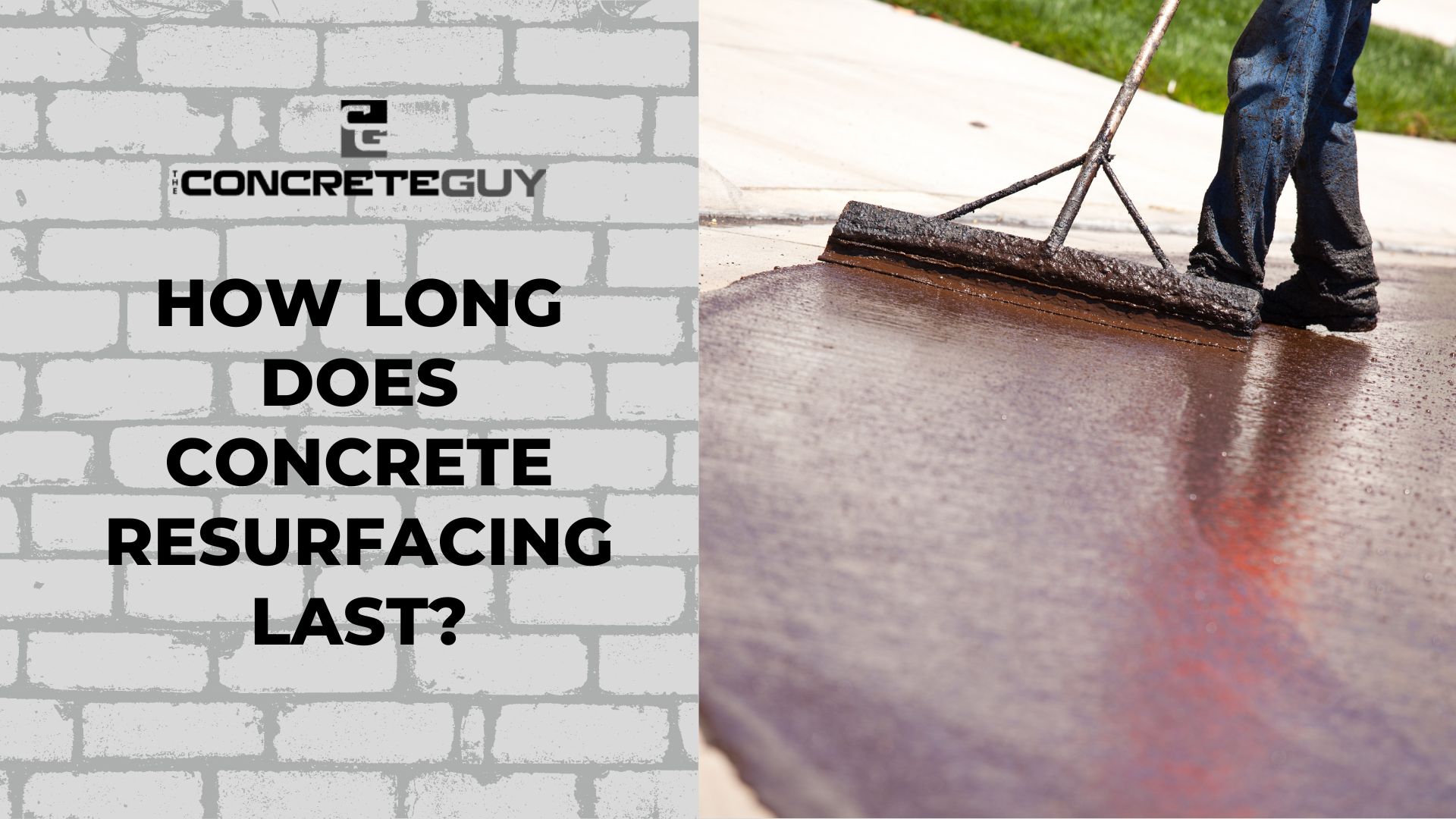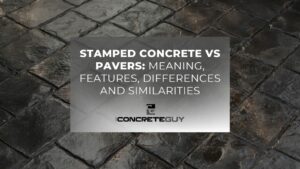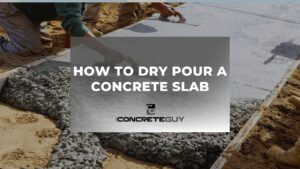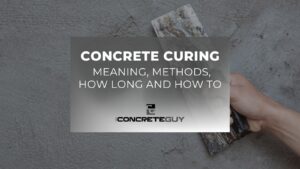Surfaces made from concrete are durable but over time they begin to crack. Concrete is the most common building material for building certain surfaces. It is made from water, aggregate, and cement, and is strong and durable. For this reason, it is used to make many structures such as driveways and parking lots.
However, over time, concrete starts to crack, reducing aesthetic and functional value. Concrete resurfacing is meant to renew the old concrete surface. This method is commonly employed to restore worn, cracked, or otherwise damaged concrete without requiring complete removal and replacement. A properly done concrete resurfacing lasts about 10-15 years, but this depends on a few factors.
What is Concrete Resurfacing?
Concrete resurfacing is a process used to repair and renew existing concrete surfaces by applying a new layer of concrete over the old one. Concrete resurfacing offers several benefits, including cost-effectiveness when compared to complete replacement, faster turnaround time, and the ability to customize the appearance of the surface. It also provides a sustainable solution by minimizing waste and reducing the environmental impact associated with concrete removal and disposal.
Concrete resurfacing is done on driveways, patios, pool decks, walkways, and other outdoor concrete surfaces that have experienced wear and tear over time. It is a practical and versatile method for rejuvenating existing concrete surfaces, extending their lifespan, and enhancing their functionality and aesthetics.
What to Consider Before Resurfacing Concrete
To ensure resurfacing is the best route to take, here are two factors to consider:
- The age and condition of the original concrete slab.
- The age of the house
What is the Lifespan of a Concrete Resurfacing
In most applications, the average life expectancy of resurfaced concrete is 10 to 15 years. The actual lifespan varies depending on the application. Concrete resurfacing on a residential driveaway has a shorter lifespan than a parking lot because of foot and vehicle traffic.
Other factors to consider include the quality of materials used, the level of maintenance, and the climate conditions. Regular maintenance practices, such as cleaning the surface regularly to remove dirt and debris, applying sealants or coatings to protect against moisture and stains, and promptly repairing any cracks or damage, extend the lifespan of a concrete resurfacing. Avoiding heavy impact or abrasive activities also contributes to the longevity of the resurfacing by preventing premature wear and deterioration.
To better understand the effects of these factors on the life expectancy of concrete surfaces, contact a professional.
What Are the Factors that Affect the Lifespan of Concrete Resurfacing
Here is a closer look at some of the factors that will affect how long a concrete resurfacing last:
The Condition of the Surface Before Resurfacing
Resurfacing is usually done when the old concrete has started breaking down from usage. The depth of this damage plays a major role in how long the resurfaced concrete lasts. Placing a new surface over the top of severely damaged concrete will reduce the lifespan.
Check the concrete surface for any damage, and depending on the extent of the damage decide if repairing the damage and going on with the resurfacing is better or if there is a need for an overhaul.
The Material Used
The three most common materials for resurfacing concrete are concrete itself, asphalt, and epoxy. Each material offers different pros and cons. Concrete is the most durable of the three but it is less flexible. It chips and cracks easily when subjected to cold weather. It is also not the best option for surfaces that experience heavy traffic.
Asphalt offers more flexibility than concrete and withstands extreme temperatures better. However, it is susceptible to wear and tear when subjected to heavy traffic.
Epoxy is durable and resistant to chemicals and staining, which makes it ideal for resurfacing concrete in industrial areas. Other great resurfacing materials include polyurea and polyurethane.
Climate
Climate conditions affect how long resurfaced concrete lasts. Climate conditions, such as extreme heat, cold, rain, snow, and humidity impact the performance of concrete resurfacing. Surfaces installed in mild climates tend to last longer than those installed in places with extreme temperatures.
A general rule of thumb is that resurfacing done in areas with severe climate conditions costs more to maintain than those in milder climates. Properly designed overlays with good weather resistance properties are crucial for withstanding the effects of weathering and prolonging the lifespan of the surface.
The Workmanship
A critical factor in how long resurfaced concrete should last is the quality of the workmanship. The skill and expertise of the installer play a crucial role in the longevity of the concrete resurfacing. Proper application techniques, including mixing, pouring, spreading, and finishing the overlay, are essential for achieving a durable and uniform surface. If the installer fails in any of these stages, the resurfacing breaks down sooner than expected.
Surface Preparation
When it comes to concrete resurfacing, the finish is only as good as the preparation. Proper surface preparation is critical for the success and longevity of any resurfacing. Inadequate preparation, such as insufficient cleaning, failure to repair cracks or defects, and improper priming leads to poor adhesion and premature damage of the overlay.
Maintenance Practice
A crucial part of extending the lifespan of concrete resurfacing falls to the owner. Regular maintenance, including cleaning, sealing, and repairing any damage or cracks, is essential for prolonging the lifespan of concrete resurfacing. Neglecting maintenance can lead to the accumulation of dirt, stains, and moisture, which can degrade the overlay over time.
Consult with professionals on how to clean the surface. Use only the right tools and avoid using harsh chemicals that damage the overlay.
Traffic and Usage
The amount and type of traffic the resurfaced concrete receives impacts its durability. High-traffic areas, such as driveways, walkways, or commercial floors, may experience more wear and tear, leading to faster deterioration. The weight of heavy vehicles will also stress the overlay regardless of the material used.
Proper maintenance and regular inspections are crucial for preserving the integrity of the surface under heavy use.
How soon can I walk or drive on a newly resurfaced concrete surface?
It’s best to follow the manufacturer’s recommendations, but typically, you can walk on a resurfaced concrete surface within 24 to 48 hours. For vehicle traffic, wait at least 3 to 7 days before driving on the surface, depending on the specific overlay material and curing conditions.
Can I resurface a concrete surface multiple times?
Yes, in many cases, concrete surfaces can be resurfaced multiple times, especially if the underlying concrete structure is structurally sound. However, it’s essential to assess the condition of the existing surface and ensure proper preparation before each resurfacing to achieve optimal results.
Will concrete resurfacing fix all cracks and defects in the existing concrete?
While concrete resurfacing can improve the appearance and structural integrity of a concrete surface, it may not completely eliminate all cracks and defects, especially if they are extensive or structural in nature. Proper surface preparation and repair techniques are essential for addressing underlying issues before applying the overlay.
Can I customize the appearance of a resurfaced concrete surface?
Yes, concrete resurfacing offers various decorative options, including stains, dyes, stamps, and textures, allowing you to customize the appearance of the surface to suit your preferences. These decorative elements can enhance the aesthetics of the resurfaced concrete while providing added durability and protection.
How can I prolong the lifespan of my resurfaced concrete surface?
Regular maintenance, including cleaning, sealing, and repair of any damage, is key to prolonging the lifespan of a resurfaced concrete surface. Additionally, avoiding heavy impact or abrasive activities and addressing any issues promptly can help preserve the integrity and appearance of the overlay for years to come.









